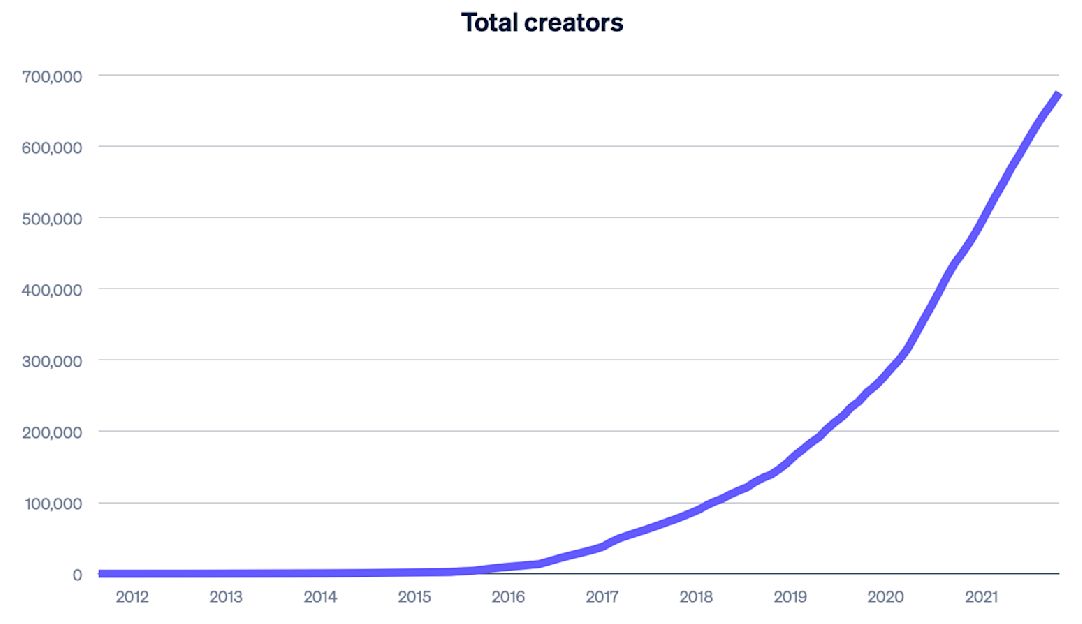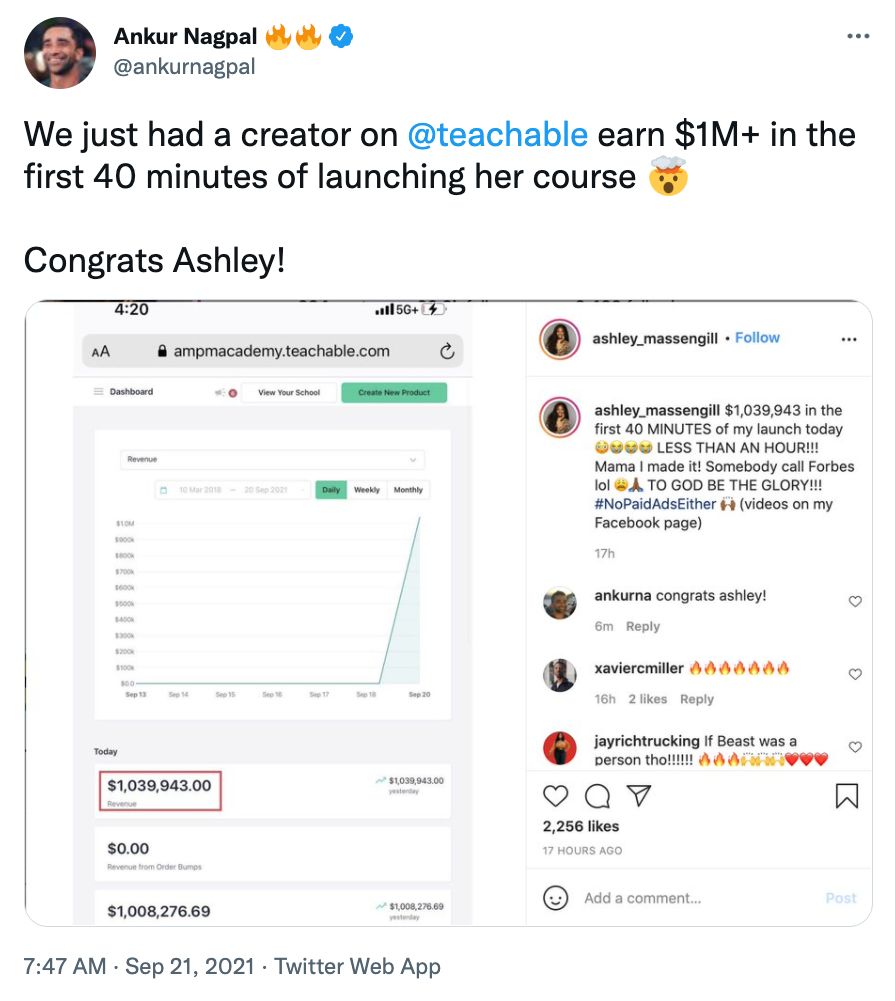Indexing the creator economy
Stanford University forecaster Paul Saffo suggests that the creator economy was first conceived in 1997 as the “new economy”. The earliest creators occupied their own weird corner of the internet—uploading Flash animations to DeviantArt or scanned manga illustrations to Xanga. But they didn’t have the tools to sell their content to earn a living as a creator online.
That all changed with the advent of new internet tools to produce and market content. The pandemic proved to be an unexpected tailwind for what was once a community on the fringes, ushering in a new generation of creators and bringing substance to the idea that anyone with an idea and an internet connection could make something of value.
Stripe has found itself at the center of this evolution. Most of these tools use Stripe Connect to onboard creators to their platform and facilitate monetization: Substack enables writers to start paid newsletters. Twitter lets creators share premium content for their Super Followers. Buy Me A Coffee helps creators receive support from their fans. To assess their impact, we indexed the creator economy by measuring the growth of 50 of these popular platforms. This is the first time data like this has been shared—it’s a fraction of creator activity, but we believe the trends are representative of the creator economy as a whole.
In aggregating monetization across these 50 platforms, we’ve found that creators will soon pass more than $10 billion in aggregate earnings. While 2020 saw a jump in new creators, it wasn’t a one-time spike. A year later, creators are still coming online at a record clip: the number of creators is up a whopping 48% year-over-year. In total, these platforms have onboarded 668,000 creators.

We also analyzed the sectors of the creator economy. Platforms like Interval, which started last year to let instructors stream fitness classes online, are a part of the biggest category by revenue: education. This isn’t surprising when you consider that digital courses were one of the earliest ways creators could get paid online: platforms like Teachable have been around since 2014 to help creators like Ashley Massengill, who’s based in Fort Worth, Texas, build courses and share their skills with others.

New sectors are quickly gaining steam. As creators grow their brands and establish dedicated audiences, they’re turning to community platforms, like Luma, to find new ways to connect with their fans. This trend has catapulted this sector’s growth to pole position, with a 148% increase in revenue year-over-year.
Seventy percent of these creator platforms raised capital to scale. Platforms that allow creators to stream or produce audio or video received the most funding. In April, Clubhouse added the ability for speakers to receive money from followers. They recently raised a Series C with $110 million in total funding.
A growing number of creators are earning their living doing what they do best. Last year, Craig Mod published a book, Kissa by Kissa, on walking the countryside of Japan. He then started a paid membership program to provide readers with a supporting newsletter and podcast, garnering over 1,000 subscribers. In the US, the number of creators earning a living wage (>$69K/year) has increased 41% year-over-year. We hope that this will continue to increase as novel methods of online creation are developed, unlocking new ways to monetize: Stripe now powers card payments for the NFT platform Nifty Gateway, which enables creators to sell crypto art.
Stripe is available for creators and businesses in 54 countries today, though their fans span the globe—Stripe supports customers from 185 countries. The creators on the platforms we analyzed are based in North America (85%), Europe/Middle East/Africa (11%), Asia-Pacific (4%) and Latin America (0.5%). The creator economy may have germinated in North America, but it’s growing in other regions faster: the countries with the quickest growth of new creators year-over-year were the Czech Republic (270%), Romania (215%), and Brazil (171%)—all countries where Stripe has recently expanded. We want to help bring the creator economy to all corners of the globe and are working to support creators in more countries.
Creators have more ways to get started and they’re leaving their 9–5 jobs to pursue their passions full-time online. As creators become increasingly reliant on the internet for their income, the status quo will have to evolve to meet the needs of these pioneering business models. For example, tax structures in many countries aren’t reflective of how creators start and run their businesses today. Most creators remain sole proprietorships and are too daunted to start LLCs.
If the recent exponential growth of the creator economy keeps up, these 50 platforms could be supporting more than 15.5 million creators in five years—representing more creators than there are people in Istanbul. Istanbul is the most populous city in Europe, but it still doesn’t make the list of the world’s top ten largest cities. So, even with rapid growth, the creator economy has a ways to go. A quarter century has passed since Paul Saffo’s perceived start of the creator economy. With better tools finally available to creators around the world, the next quarter century will look very different. Creators have always been weird, resilient, and enterprising—we’re excited to build more tools to support them.
Interested in building for the creator economy? Learn more.

